Volume 3 | Number 1 | May 2011
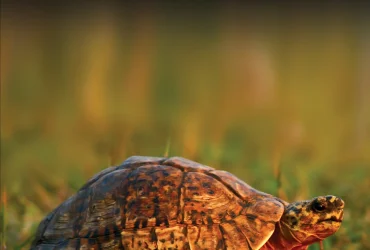 v3.i1.41
v3.i1.41ISSN: 1800-427X (print)
eISSN: 1800-427X (online)
DOI:10.47605/tapro.v3i1.41
Submitted date: 07 June 2011
Accepted date: 13 July 2011
Published date: 30 July 2011
Pp. 31–37.
REPRODUCTION AND SEXUAL DICHROMATISM IN Sitana ponticeriana (REPTILIA: DRACONINAE: AGAMIDAE)
Arttatrana Pal*, Mitali Madhusmita Swain & Swapnananda Rath
*Corresponding author. E-mail: gprszsipatna@rediffmail.com
Abstract
This paper presents the results of a two-year study of the sexual dichromatism, breeding, clutch size and development in a population of Sitana ponticeriana, conducted at Balukhand-Konark Wildlife Sanctuary, Orissa, India. Sexual dimorphism appears as a brighter overall colouration with red and dark blue gular pouch develops as outward projection at the neck. In the breeding season, mature males have crimson-red or brick-red colour at the base of the tail. Lizards start courtship in the early morning and afternoon, depending on the ambient temperature, during the early monsoons. Vitellogenic and gravid females occur simultaneously in early and mid-summer, and lay eggs during the onset of rains. Potentially, 2-3 clutches of 6- 23 eggs (mean 17.39 ± 4.39 eggs/clutch) are produced by each female each year. The smallest gravid female contained more eggs than larger ones. Eggs collected late in the reproductive season were significantly larger than those collected earlier. Freshly laid eggs are elliptical; during development, the shape, size and volume of the eggs were changed; hatchling success observed after 39 days of incubation.
Key words : ambient temperature, clutch size, development, Fan-throated lizard, India
Section Editor: Indraneil Das
eISSN: 1800-427X (online)
DOI:10.47605/tapro.v3i1.41
Submitted date: 07 June 2011
Accepted date: 13 July 2011
Published date: 30 July 2011
Pp. 31–37.
REPRODUCTION AND SEXUAL DICHROMATISM IN Sitana ponticeriana (REPTILIA: DRACONINAE: AGAMIDAE)
Arttatrana Pal*, Mitali Madhusmita Swain & Swapnananda Rath
*Corresponding author. E-mail: gprszsipatna@rediffmail.com
Abstract
This paper presents the results of a two-year study of the sexual dichromatism, breeding, clutch size and development in a population of Sitana ponticeriana, conducted at Balukhand-Konark Wildlife Sanctuary, Orissa, India. Sexual dimorphism appears as a brighter overall colouration with red and dark blue gular pouch develops as outward projection at the neck. In the breeding season, mature males have crimson-red or brick-red colour at the base of the tail. Lizards start courtship in the early morning and afternoon, depending on the ambient temperature, during the early monsoons. Vitellogenic and gravid females occur simultaneously in early and mid-summer, and lay eggs during the onset of rains. Potentially, 2-3 clutches of 6- 23 eggs (mean 17.39 ± 4.39 eggs/clutch) are produced by each female each year. The smallest gravid female contained more eggs than larger ones. Eggs collected late in the reproductive season were significantly larger than those collected earlier. Freshly laid eggs are elliptical; during development, the shape, size and volume of the eggs were changed; hatchling success observed after 39 days of incubation.
Key words : ambient temperature, clutch size, development, Fan-throated lizard, India
Section Editor: Indraneil Das
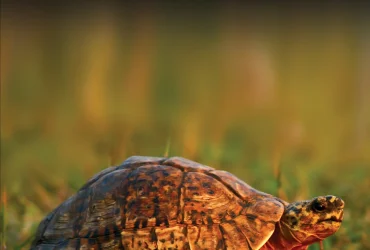 v3i1.40
v3i1.40ISSN: 1800-427X (print)
eISSN: 1800-427X (online)
DOI:10.47605/tapro.v3i1.40
Submitted date: 28 February 2011
Accepted date: 13 July 2011
Published date: 30 July 2011
Pp. 18–30.
BENTHIC MACRO-INVERTEBRATE FAUNA AND “MARINE ELEMENTS” SENSU ANNANDALE (1922) HIGHLIGHT THE VALUABLE DOLPHIN HABITAT OF RIVER GANGA IN BIHAR - INDIA
Hasko Nesemann, Gopal Sharma* & Ravindra K. Sinha
*Corresponding author. E-mail: gprszsipatna@rediffmail.com
Abstract
From the main channel of River Ganga 95 invertebrate taxa have been recorded in the endangered Gangetic Dolphin (Platanista gangetica) habitat over an observation period of ten years. Mollusks, Annelids and Arthropods are the dominating benthic groups that constitute the detritivores, filter-feeders and sediment feeders, scrapers/grazers and herbivores. The benthic sediment fauna is rich in diversity and high in abundance. This enables carnivores to occupy a large variety of specialized ecological niches. The qualitative faunal composition of Ganga resembles in general large European rivers with similar representation of taxa. Twelve taxa of marine-originated families were identified, but none of them can be classified as invasive or non-indigenous species. Only two taxa are certainly recognized as non-indigenous neozoans, whereas the remaining fauna shows pristine and stable ecological conditions. In this aspect River Ganga differs from regulated large rivers, where faunal change has largely replaced the original species inventory. Despite the heavy pollution in parts of the river, the original composition of biological diversity is still persisting in the middle reaches of the Ganga. This provides hope for the survival of the Gangetic Dolphin.
Key words : Aquatic, invasive species, functional feeding groups, Gangetic Dolphin
Section Editor: Remadevi
eISSN: 1800-427X (online)
DOI:10.47605/tapro.v3i1.40
Submitted date: 28 February 2011
Accepted date: 13 July 2011
Published date: 30 July 2011
Pp. 18–30.
BENTHIC MACRO-INVERTEBRATE FAUNA AND “MARINE ELEMENTS” SENSU ANNANDALE (1922) HIGHLIGHT THE VALUABLE DOLPHIN HABITAT OF RIVER GANGA IN BIHAR - INDIA
Hasko Nesemann, Gopal Sharma* & Ravindra K. Sinha
*Corresponding author. E-mail: gprszsipatna@rediffmail.com
Abstract
From the main channel of River Ganga 95 invertebrate taxa have been recorded in the endangered Gangetic Dolphin (Platanista gangetica) habitat over an observation period of ten years. Mollusks, Annelids and Arthropods are the dominating benthic groups that constitute the detritivores, filter-feeders and sediment feeders, scrapers/grazers and herbivores. The benthic sediment fauna is rich in diversity and high in abundance. This enables carnivores to occupy a large variety of specialized ecological niches. The qualitative faunal composition of Ganga resembles in general large European rivers with similar representation of taxa. Twelve taxa of marine-originated families were identified, but none of them can be classified as invasive or non-indigenous species. Only two taxa are certainly recognized as non-indigenous neozoans, whereas the remaining fauna shows pristine and stable ecological conditions. In this aspect River Ganga differs from regulated large rivers, where faunal change has largely replaced the original species inventory. Despite the heavy pollution in parts of the river, the original composition of biological diversity is still persisting in the middle reaches of the Ganga. This provides hope for the survival of the Gangetic Dolphin.
Key words : Aquatic, invasive species, functional feeding groups, Gangetic Dolphin
Section Editor: Remadevi
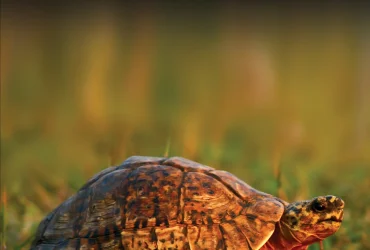 v3i1.39
v3i1.39ISSN: 1800-427X (print)
eISSN: 1800-427X (online)
DOI:10.47605/tapro.v3i1.39
Submitted date: 16 May 2011
Accepted date: 13 June 2011
Published date: 30 July 2011
Pp. 15–17.
FOUR NEW ASTERINACEOUS MEMBERS FROM KERALA, INDIA
V.B. Hosagoudar*, Jacob Thomas & D.K. Agarwal
*Corresponding author. E-mail: vbhosagoudar@rediffmail.com
Abstract
This paper gives an account of four new members belonging to the genera Asterina and Cirsosia, namely, Asterina aristolochiae, Asterina phyllanthi-beddomei, Cirsosia hopeae and Asterina thunbergiicola Hansford var. indica are described and illustrated.
Key words : morphology, characterization, lepidosis, habitus, colouration
Section Editor: R.K. Verma
eISSN: 1800-427X (online)
DOI:10.47605/tapro.v3i1.39
Submitted date: 16 May 2011
Accepted date: 13 June 2011
Published date: 30 July 2011
Pp. 15–17.
FOUR NEW ASTERINACEOUS MEMBERS FROM KERALA, INDIA
V.B. Hosagoudar*, Jacob Thomas & D.K. Agarwal
*Corresponding author. E-mail: vbhosagoudar@rediffmail.com
Abstract
This paper gives an account of four new members belonging to the genera Asterina and Cirsosia, namely, Asterina aristolochiae, Asterina phyllanthi-beddomei, Cirsosia hopeae and Asterina thunbergiicola Hansford var. indica are described and illustrated.
Key words : morphology, characterization, lepidosis, habitus, colouration
Section Editor: R.K. Verma
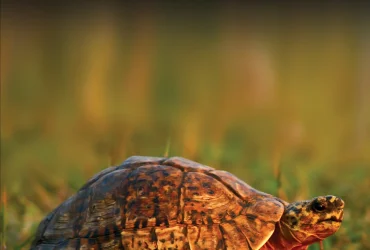 v3i1.38
v3i1.38ISSN: 1800-427X (print)
eISSN: 1800-427X (online)
DOI:10.47605/tapro.v3i1.38
Submitted date: 01 April 2011
Accepted date: 13 June 2011
Published date: 30 July 2011
Pp. 11–14.
ON A RARE, SOUTH INDIAN BURROWING SNAKE Platyplectrurus trilineatus (BEDDOME, 1867)
S.R. Ganesh*
*E-mail: snakeranglerr@gmail.com
Abstract
Examination of five juvenile preserved specimens of Platyplectrurus trilineatus, an endemic, poorly-known Uropeltid snake species from the Western Ghats Mountains of Southwestern India provided further insights into its taxonomy. The sample examined here agreed well with the existing descriptions in literature in colouration and most aspects of scalation but had larger range of ventral scale count and smaller supraocular relative to prefrontal. Character definition (in the case of ventrals) and ontogenic variation (in the case of supraocular size) might have possibly created these discrepancies. These differences indicate that a better sampling of both specimens and characters would throw more light on this species.
Key words : morphology, characterization, lepidosis, habitus, colouration
Section Editor: Gernot Vogel
eISSN: 1800-427X (online)
DOI:10.47605/tapro.v3i1.38
Submitted date: 01 April 2011
Accepted date: 13 June 2011
Published date: 30 July 2011
Pp. 11–14.
ON A RARE, SOUTH INDIAN BURROWING SNAKE Platyplectrurus trilineatus (BEDDOME, 1867)
S.R. Ganesh*
*E-mail: snakeranglerr@gmail.com
Abstract
Examination of five juvenile preserved specimens of Platyplectrurus trilineatus, an endemic, poorly-known Uropeltid snake species from the Western Ghats Mountains of Southwestern India provided further insights into its taxonomy. The sample examined here agreed well with the existing descriptions in literature in colouration and most aspects of scalation but had larger range of ventral scale count and smaller supraocular relative to prefrontal. Character definition (in the case of ventrals) and ontogenic variation (in the case of supraocular size) might have possibly created these discrepancies. These differences indicate that a better sampling of both specimens and characters would throw more light on this species.
Key words : morphology, characterization, lepidosis, habitus, colouration
Section Editor: Gernot Vogel
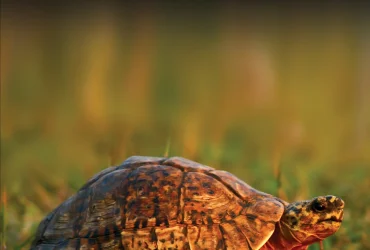 v3i1.37
v3i1.37ISSN: 1800-427X (print)
eISSN: 1800-427X (online)
DOI:10.47605/tapro.v3i1.37
Submitted date: 24 March 2010
Accepted date: 13 June 2011
Published date: 30 July 2011
Pp. 5–10.
REPORT OF SOME NOTEWORTHY SPECIMENS AND SPECIES OF HERPETOFAUNA FROM SOUTH-EAST INDIA
S.R. Ganesh* & S.R. Chandramouli
*Corresponding author. E-mail: snakeranglerr@gmail.com
Abstract
We report abnormal individuals of Ramanella variegata, Lycodon aulicus (sensu lato), Bungarus caeruleus which exhibited variation from the ‘typical morphs’ of their respective species. Also we report a rarely recorded species Polypedates cf. leucomystax (from south India), from the Mannampandal area of Tamil Nadu. These observations based on voucher photographs are presented for the first time.
Key words : Morph, aberration, variation, phenotypic plasticity, polymorphism
Section Editor: Gernot Vogel
eISSN: 1800-427X (online)
DOI:10.47605/tapro.v3i1.37
Submitted date: 24 March 2010
Accepted date: 13 June 2011
Published date: 30 July 2011
Pp. 5–10.
REPORT OF SOME NOTEWORTHY SPECIMENS AND SPECIES OF HERPETOFAUNA FROM SOUTH-EAST INDIA
S.R. Ganesh* & S.R. Chandramouli
*Corresponding author. E-mail: snakeranglerr@gmail.com
Abstract
We report abnormal individuals of Ramanella variegata, Lycodon aulicus (sensu lato), Bungarus caeruleus which exhibited variation from the ‘typical morphs’ of their respective species. Also we report a rarely recorded species Polypedates cf. leucomystax (from south India), from the Mannampandal area of Tamil Nadu. These observations based on voucher photographs are presented for the first time.
Key words : Morph, aberration, variation, phenotypic plasticity, polymorphism
Section Editor: Gernot Vogel
Hubungi Kami
The ultimate aim of the journal is to provide an effective medium for communication of the latest and best scientific information.
Copyright © 2020 Taprobanica. All Rights Reserved
Jasa Pembuatan Website by IKT




